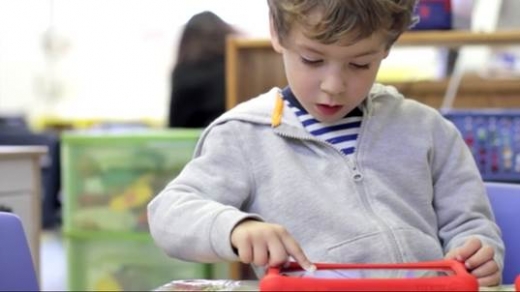It’s safe to say that 2015 has been a year marked by mixed messaging on the state of traditional TV viewing.
Most recently, Common Sense Media in the US released a report that underpinned tweens’ unwavering devotion to the small screen, which bears some contrast to UK communication regulator Ofcom’s just-released study, Children and Parents: Media Use and Attitudes, which has found that the wider range of content and platforms – particularly tablets – are having a small yet significant impact on traditional TV.
The Ofcom report, which looks at 2015 media use among UK children ages five to 15, while offering detailed information media access among three- to four-year-olds, finds that tablets are increasingly being used as a default entertainment screen, particularly among younger children. And this is set alongside a decrease in the numbers watching TV via a TV set.
The number of children who use a tablet has risen to more than half (53%) of three- to four-year-olds, up from 39% in 2014, while representing 75% of five to 15s, up from 64% a year ago. The increase is evident across all age groups, with the biggest rise among five- to seven-year-olds, which saw a 15% rise to 69%.
The number of children who have their own tablet has also increased to one in seven three- and four-year-olds (15%, from 11% in 2014) and 40% of five to 15s. A full 81% of five- to 15-year-olds have a tablet in the home, an increase of 10% since 2014. Three-quarters of children ages three to four live in a household with a tablet computer, and this number has also increased by 10% since 2014. (Interestingly, while there has been a 4% increase since 2014 in tablet ownership among preschoolers and a 6% increase among five- to 15-year-olds, the rise is not as large as that seen between 2013 and 2014 for either preschoolers (8%) or five to 15s at 15%).
In terms of what’s actually being consumed on tablets, children ages three to 15 are more likely to watch television programs or films on the device than they were in 2014. The preschool set is also more likely to use alternative devices other than a TV set (30% vs. 22%) than in 2014, and this is mostly due to the increased use of a tablet (20% vs. 13%). There has been an increase since 2014 in the incidence of five to 15s using a tablet computer to watch television programs or films (27% vs. 20%).
Across the board, watching TV on a tablet has increased between 2014 and 2015 among all age groups, and for all ages other than 12 to 15s, tablets are now the second-most popular device for watching both live and on-demand (after the TV set). (For these tweens and teens, desktop computers/laptops are slightly more popular than tablets). There has also been an increase since 2014 among younger children in playing games on a tablet, rising from 21% in 2014 to 28% for preschoolers, and from 30% to 37% for five- to seven-year-olds.
So where do all the stats leave the boob tube?
The TV set is still the media device used regularly by most children in each age group. Roughly 87% of children ages five to 15 say they regularly use a TV set, and this is more likely for five- to seven-year-olds (92%) than those in the eight to 11 range (85%) or tweens and teens (84%). However, more children are using portable devices to watch TV. For instance, 42% of eight to 11s and 57% of 12 to 15s watch television on a device other than a TV set, with 25% of eight to 11s and 31% of 12 to 15s watching on a tablet.
Meanwhile, the number of tweens and teens who ever watch TV on a TV set has fallen slightly since 2014 for both groups (from 99% to 97% for eight to 11s and from 100% to 95% for 12 to 15s).
Albeit a small drop, this decrease still holds meaning given the increase in viewing on alternative devices, according to the report.
The number of five to 15s with access to a DVD player or Blu-ray recorder has also decreased, while this demo is more often watching TV on other devices, including tablets, mobile phones and games players, has increased. For instance, 43% of five to 15s who watch on-demand content do so on devices other than a TV set.
Meanwhile, TV isn’t the only medium upon which tablets are having an impact. Children five to 15 are less likely in 2015 than in 2014 to use a laptop or netbook (62% vs. 66%) or a desktop computer (28% vs. 32%) to go online. Tablets are now the most often-used device for going online for all age groups except 12 to 15s, with half of preschoolers and five- to seven-year-olds (51% and 49%), and more than a third of eight to 11s (36%) “mostly” using a tablet to go online, representing a significant increase since 2014.

























